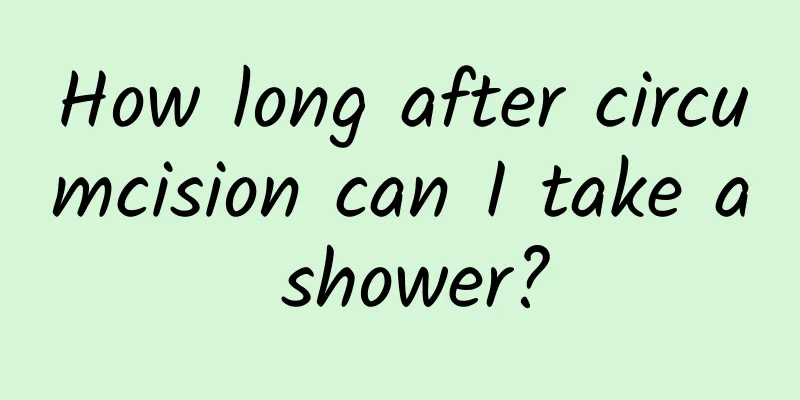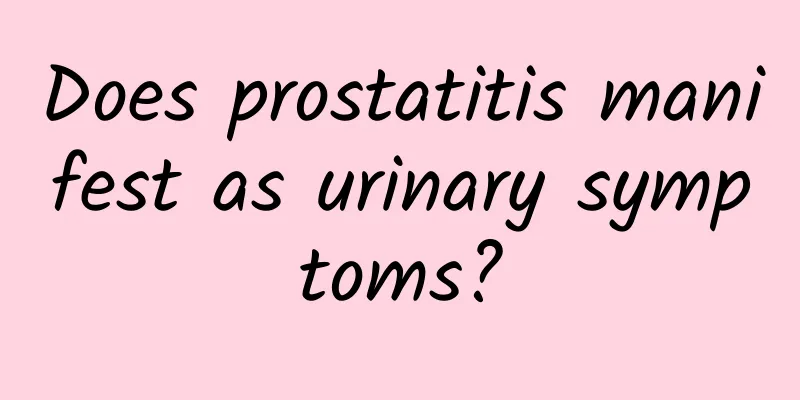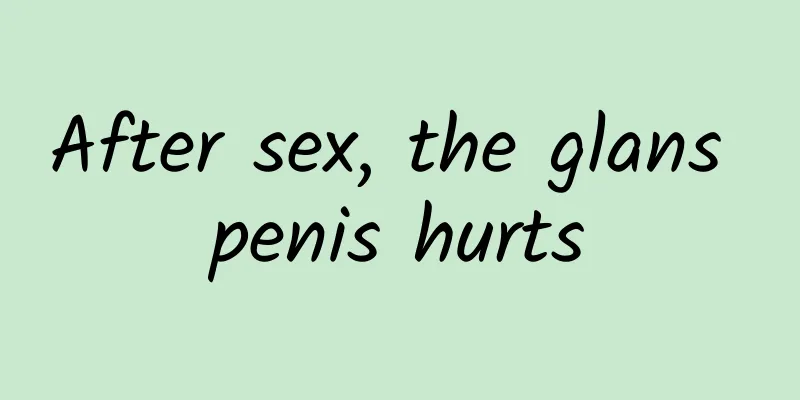What to do if your prostate is slightly enlarged

|
I believe everyone knows what the prostate is. The prostate plays a very important role for male friends. If a male friend has a problem with the prostate, it is not only easy to feel pain but also easy to affect fertility. Therefore, we recommend that the majority of male friends must pay attention to their prostate in daily life. Below we will introduce to you what to do if the prostate is slightly enlarged. 1. Antimicrobial therapy The discovery of pathogenic pathogens in prostatic fluid culture is the basis for selecting antibacterial drug treatment. If patients with non-bacterial prostatitis have signs of bacterial infection and general treatment is ineffective, they can also be appropriately treated with antibacterial drugs. When choosing antibacterial drugs, it is necessary to pay attention to the presence of a prostate-blood barrier composed of lipid membranes between the prostate acini and the microcirculation, which hinders the passage of water-soluble antibiotics and greatly reduces the therapeutic effect. When prostate stones are present, the stones can become a shelter for bacteria. The above factors constitute the difficulty in the treatment of chronic bacterial prostatitis, which requires a longer course of treatment and is prone to recurrence. Currently, quinolone drugs such as ofloxacin or levofloxacin are recommended. If ineffective, continue to use it for 8 weeks. If recurrence occurs and the bacterial species remains unchanged, switch to preventive doses to reduce acute attacks and relieve symptoms. If long-term use of antibiotics induces serious side effects, such as pseudomembranous colitis, diarrhea, and the growth of intestinal resistant strains, the treatment plan needs to be changed. Whether non-bacterial prostatitis is suitable for treatment with antibacterial drugs is still controversial in the clinic. Patients with "aseptic" prostatitis can also use drugs that are effective against bacteria and mycoplasmas, such as quinolones, SMZ-TMP or TMP alone, used in combination with tetracycline and quinolones or used intermittently. If antibiotic treatment is ineffective and it is confirmed to be aseptic prostatitis, antibiotic treatment should be discontinued. In addition, using a double balloon catheter to block the prostatic urethra and injecting antibiotic solution from the urethral cavity back into the prostatic duct can also achieve the purpose of treatment. Type I is mainly treated with broad-spectrum antibiotics, symptomatic treatment and supportive treatment. Type II is recommended to be treated with oral antibiotics, and sensitive drugs are selected. The course of treatment is 4-6 weeks, during which the patient should be evaluated for the efficacy. Type III can first take oral antibiotics for 2 to 4 weeks and then evaluate the efficacy. At the same time, non-steroidal anti-inflammatory drugs, α-receptor antagonists, M-receptor antagonists, etc. are used to improve urination symptoms and pain. Type IV does not require treatment. 2. Anti-inflammatory and analgesic drugs Nonsteroidal anti-inflammatory drugs can improve symptoms. Generally, indomethacin is taken orally or in suppositories. Chinese medicine also has certain effects in using anti-inflammatory, heat-clearing, detoxifying, and hardness-softening drugs. Allopurinol can reduce the concentration of uric acid in the whole body and prostatic fluid. Theoretically, as a free radical scavenger, it can also remove active oxygen components, reduce inflammation, and relieve pain. It is an optional auxiliary treatment method. 3. Physical therapy Prostate massage can empty the concentrated secretions in the prostate duct and drain the infection focus in the obstructed area of the gland. Therefore, for stubborn cases, prostate massage can be performed every 3 to 7 days while using antibiotics. A variety of physical factors are used for prostate physiotherapy, such as microwave, radio frequency, ultrashort wave, medium wave and hot water sitz bath, which are beneficial for relaxing the prostate, posterior urethral smooth muscle and pelvic floor muscle, enhancing antibacterial efficacy and relieving pain symptoms. 4.M-receptor antagonists M-receptor antagonists can be used to treat prostatitis in patients with symptoms of overactive bladder such as urgency, frequency, and nocturia but without urinary tract obstruction. In the above article, we introduced the importance of the prostate to male friends. We recommend that male friends should pay attention to protecting their prostate in daily life. The above article introduces in detail what to do if the prostate is slightly enlarged. |
<<: What to do if the prostate is slightly enlarged
>>: Reasons for uneven prostate echo
Recommend
Left scrotal varicose vein
As a common male disease, left scrotal varicocele...
Reasons for white sediment in urine
Sometimes when we urinate, we find some white pre...
Why does a man urinate blood?
Many doctors will tell us that a person's uri...
How long does it take for a boy to have sex for the first time?
In the process of human development, people will ...
Why is there a red spot on the glans penis when it is erect?
In daily life, many men notice small red spots on...
What causes peeling of the outer skin of the testicles?
If men find that the skin on the outside of their...
What to do if you have an erection after circumcision surgery?
An excessively long foreskin can bring a lot of t...
Is it good to apply erythromycin ointment on the broken skin of the glans?
The glans of men can be said to be the most vulne...
How to deal with fat particles? There are some tricks to remove fat particles
Fat particles are not only a problem that trouble...
How to treat prostate calcification points?
Because of some bad living habits, some men often...
How to treat flocs in men's urine after sedimentation?
Some men find that their urine will have floccule...
How to have a baby after a vasectomy
If a man who has chosen vasectomy wants to have a...
What to eat to improve sperm quality
After a couple gets married, becoming a prospecti...
What is the cause of the black mole on the glans?
I believe that men must have seen the phenomenon ...
Sweat has no smell, so why does men have sweat odor?
In the human body, there are two types of sweat g...









